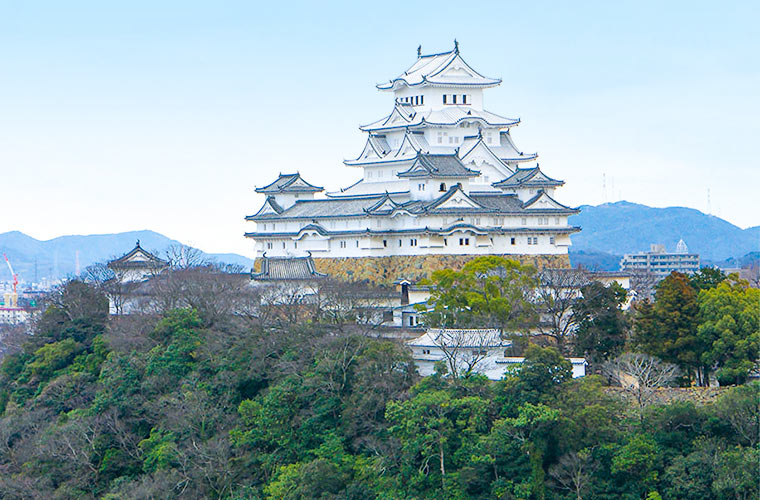
Feb 1, 2024 1,191 views
5-Minute Read About the History of Himeji Castle|When was it built? by whom? for what purpose? Why is it a World Heritage Site?
In December 2023, Himeji Castle will celebrate the 30th anniversary of its registration as a World Heritage site, and will become even more lively with various events being held. The castle attracts as many as 1 million tourists a year from Japan and abroad, and its white, beautiful, and majestic appearance captivates people. As this article briefly summarizes the history and features of Himeji Castle, you may finish reading just in 5 mitutes!
INDEX
- ・About Himeji Castle
- ・Why was Himeji Castle registered as a World Heritage Site?
- ・When and who built Himeji Castle?
- ・Norimura Akamatsu, who built a fort on Mt Hime
- ・Akamatsu Sadanori, who built Himeji Castle in the early period
- ・What is the relationship between Kanbei Kuroda and Himeji Castle?
- ・Relationship between Hideyoshi and Himeji Castle
- ・Who was the lord of the castle in the Edo period?
- ・Why is Himeji Castle called "White Egret Castle"?
- ・"Heisei Era Repairs" that restored the castle to its original splendor
- ・Is it true that there is a ghost in Himeji Castle?
- ・Is there any wars happeded in Himeji Castle?
- ・Explore Himeji Castle with AR application!
- ・Volunteer Guide at Himeji Castle
- ・Check out the annual events of Himeji Castle!
- ■Information
・About Himeji Castle
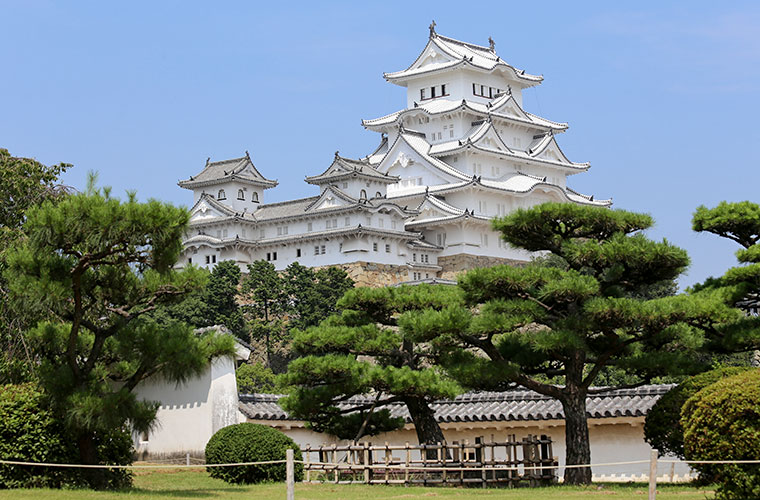
Himeji-jo (Himeji Castle) is a famous castle registered as a World Heritage site. It is nicknamed “Shirasagi-jo” (White Egret Castle) by the local citizens of Himeji because of its graceful appearance, which resembles an egret spreading its wings.
Let’s start with a profile of Himeji Castle.
| Profile of Himeji Castle | |
|---|---|
| Alias | ・Shirasagi-jo or Hakuro-jo (White Egret Castle) ・The Castle of Success ・Castle of No Wars |
| Construction | 1346 (Legend) |
| First lord | Sadanori Akamatsu (Legend) |
| Last lord of the castle | Tadakuni Sakai (1868) |
| Designated Cultural Properties | ・National Treasure ・Important Cultural Property ・Special Historic Site ・UNESCO World Cultural Heritage |
| Access | Approx. 20 min. walk from JR Himeji Station and Sanyo Himeji Station |
・Why was Himeji Castle registered as a World Heritage Site?
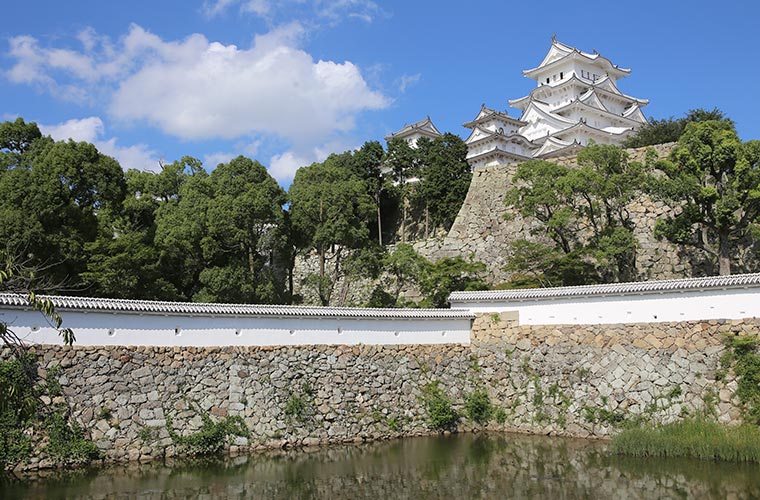
Himeji Castle was registered as Japan’s first UNESCO World Heritage Site on December 11, 1993, together with “Buddhist Monuments in the Horyu-ji Area” in Nara Prefecture.
The reason for the registration was that the aesthetic perfection of Himeji Castle is the highest level of Japanese wooden architecture, and is unparalleled in the world. It is a valuable legacy both domestically and internationally.
| List of Designated Cultural Properties | |
|---|---|
| 1928 | Ruins of Himeji Castle designated as a historic site |
| 1931 | 74 buildings, including the Nino Watashi Tower, were designated as Important Cultural Properties. |
| 1956 | Himeji Castle Ruins designated as Special Historic Site |
| 1951 | Eight buildings, including the Main Keep and the East Main Keep, were designated as National Treasures. |
| 1993 | Registered as Japan’s first World Cultural Heritage along with Buddhist monuments in the Horyu-ji area |
・When and who built Himeji Castle?
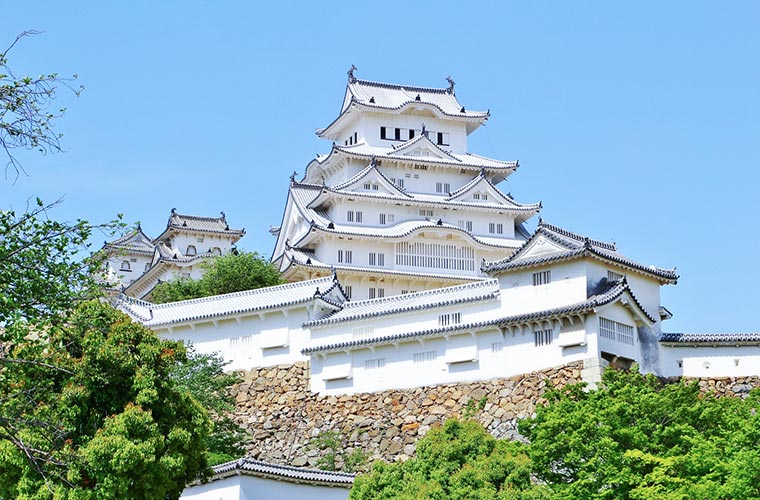
The first person to establish a fortress on Himeyama, where Himeji Castle is located, was Norimura (Enshin) Akamatsu, a governor of Harima Province in the Nanbokucho Period. Later, his son Sadanori built a full-scale castle in 1346.
However, it was not until the Warring States Period that Himeji Castle came into the limelight, and historical documents confirm that the castle was located on Himeyama in 1561.
Some say that it was first built by Shigetaka Kuroda and Mototaka, who ruled Himeji, with the permission of their lord, Masamoto Kodera, as an outcast castle (a small castle built to fortify the main castle) for Gochaku Castle.
・Norimura Akamatsu, who built a fort on Mt Hime
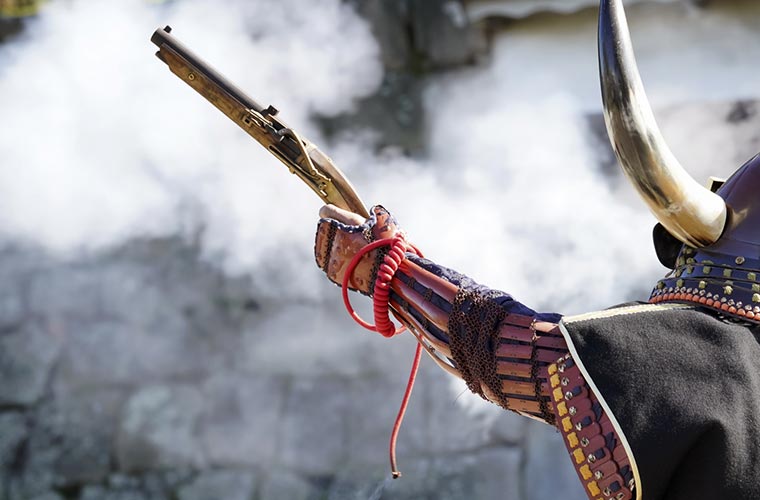
The year 1333, when the fortress of Himeji Castle was built on Himeyama for the first time, was the year of the fall of the Kamakura shogunate. During this time of warfare, Akamatsu Norimura raised an army on the side of Emperor Godaigo, or the anti-Kamakura Shogunate, and built a fort on Himeyama.
Norimura Akamatsu is an important figure in the history of Himeji Castle. He was the fourth head of the Akamatsu clan (Uji) and also served as a military commander on the side of Emperor Godaigo during the “Motohiro Rebellion” under the order of Prince Moriyoshi / Morinaga. After the fall of the Kamakura Shogunate, he became the Protector of Harima.
However, when Prince Moriyoshi lost his position, Norimura’s position deteriorated. However, in 1336, he was given another chance, and as a close associate of Ashikaga Takauji, he was given the position of Harima Protector again, and was active in establishing defensive bases in various parts of Harima.
・Akamatsu Sadanori, who built Himeji Castle in the early period

Himeji Castle has undergone renovations and additions to reach its current form, but its foundation is said to have been built by Sadanori Akamatsu in 1346 (during the Muromachi shogunate), 13 years after the fortress was built on Himeyama.
Sadanori was the second son of Akamatsu Norimura, who built the fort, and like his father, was a military commander who served Emperor Godaigo and Ashikaga Takauji as his lord.
In 1441, the Akamatsu clan was cut off by the “Kakitsu Rebellion” and Yamana Mochitoyo became the governor of Harima. However, Akamatsu Masanori regained the Harima province after the “Ounin War” in 1467, and Kodera, a general on the Akamatsu clan’s side, served as lord of Himeji Castle again after that.
・What is the relationship between Kanbei Kuroda and Himeji Castle?
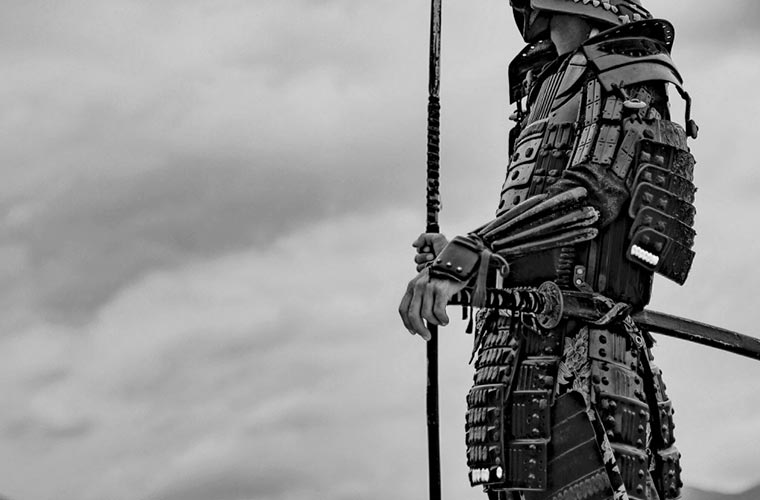
Many of you may know the name of Kanbei Kuroda, a famous military strategist who left his mark on the history of the Warring States period.
From the early days, the Kodera clan, a branch of the Akamatsu clan and the Uno clan, had been the lord of Himeji Castle, but from around 1566, there was a conflict within the Akamatsu clan that could be called a civil war, and even Nobunaga Oda intervened in the battle.
After many twists and turns, Shigetaka Kuroda, a vassal of the Kodera clan and grandfather of Kanbei, became the lord of the castle by order of the Kodera clan.
In 1546, Yoshitaka (Kanbei) Kuroda succeeded him as the 14th lord of Himeji Castle, demonstrating his skill by defeating an enemy attack of 3,000 men with only 300 men in the “Battle of Aoyama and Dokiyama” in 1569.
・Relationship between Hideyoshi and Himeji Castle
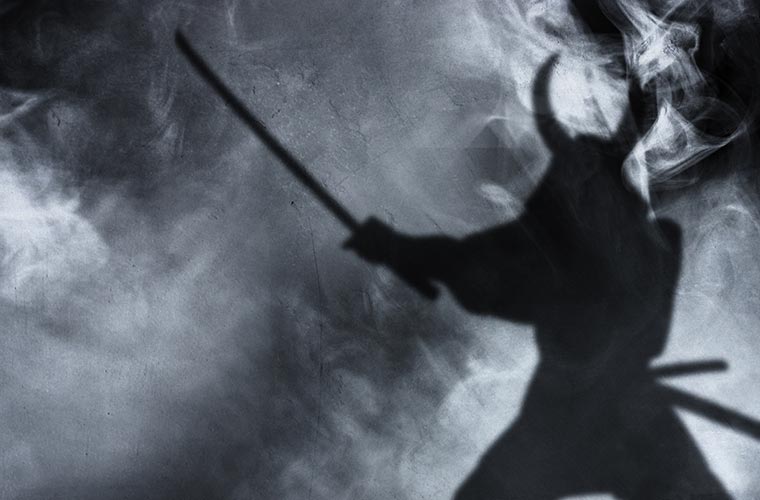
Yoshitaka Kuroda presented Himeji Castle to Hideyoshi as a “key point of Banshu governance” and Hideyoshi Hashiba (later Toyotomi) became the lord of Himeji Castle in 1580.
During his three years as lord of the castle, Hideyoshi built a stone-wall castle with a castle tower, and also formed a castle town during this period. Although Hideyoshi is often associated with Osaka Castle, he was actually at Himeji Castle a few years before moving to Osaka Castle.
Himeji Castle is also called the “castle of success” because Hideyoshi held tea ceremonies, defeated Mitsuhide Akechi, and moved his base of operations to Osaka Castle, which became the foundation for his unification of the country.
・Who was the lord of the castle in the Edo period?
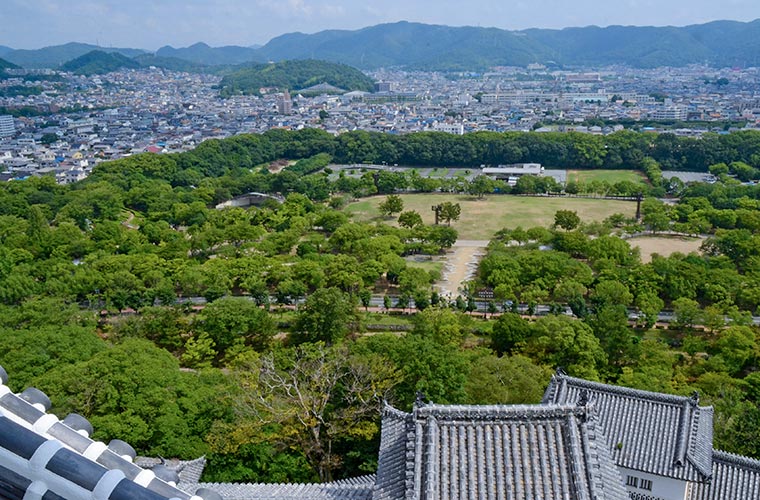
After Hideyoshi’s death and the Battle of Sekigahara, who became the lord of Himeji Castle?
As it turns out, Ikeda Terumasa became the lord of the castle in 1600, and the castle was strengthened. It is said that the outer walls were whitened during this renovation.
Later, in 1617, Tadamasa Honda became the lord of the castle and expanded the castle, including the San-no-maru and Nishi-no-maru. Himeji Castle became even more important as a strategic point in western Japan.
・Why is Himeji Castle called “White Egret Castle”?
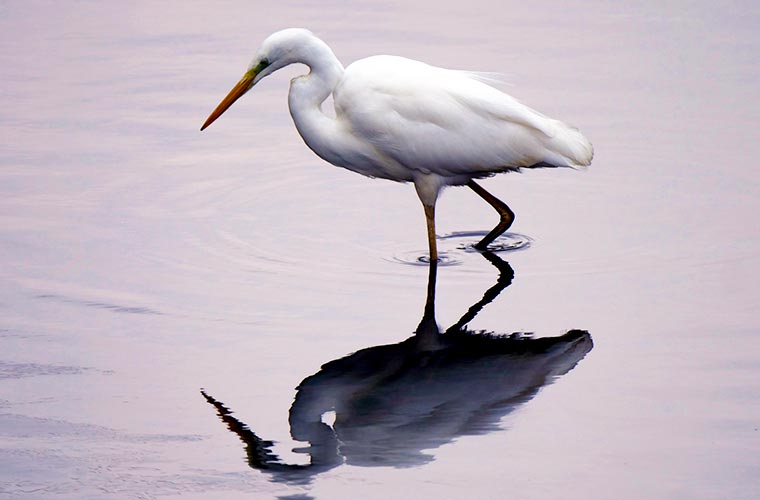
Himeji Castle, built on top of Mt. Hime, stands tall in the area and overlooks the city of Himeji.
The outer walls of the castle, including the main keep, and the joints of the roof tiles are painted with white plaster, giving the castle the appearance of an egret (a generic name for a white heron), which is why it is affectionately called “Shirasagi Castle.
The white plaster applied to the entire castle is said to be fireproof and waterproof, and was adopted not only for its beauty, but also to prevent the spread of fire caused by firearms.
・”Heisei Era Repairs” that restored the castle to its original splendor
 Courtesy of Maruichi Co., Ltd.
Courtesy of Maruichi Co., Ltd.
After the “Shouwa Era Repairs” completed in 1964, Himeji Castle had been damaged over the years, but in October 2009, it underwent another large-scale repair project, the “Heisei Era Repairs,” which included repainting the outer walls with plaster, replacing roof tiles, and reinforcing the castle to make it more earthquake resistant.
The construction period was approximately five and a half years, ending in March 2015, and the project cost approximately 2.8 billion yen, of which 1 billion yen was paid by Himeji City. Himeji City paid 1 billion yen of the total cost, and a fund-raising campaign were also introduced.
After the repairs, the castle became the talk of the town as “too white”. The castle has regained a brilliance worthy of its name, Shirasagi-jo (Egret Castle).
・Is it true that there is a ghost in Himeji Castle?

In fact, it has been said since the Edo period that Himeji Castle is home to a female ghost called Osakabe Hime (Princess).
The ghost is said to tell the lord of the castle of the fate of the castle, cause bizarre phenomena, or even hold a grudge against Miyamoto Musashi when he exterminated the ghost, and many other legends shrouded in mystery.
There are many theories as to the true identity of the princess, including that she is a fox, a human spirit, or a deity of Himeyama, all of which appear in several old books and collections of ghost stories.
Rumors circulated during the reign of Ikeda Terumasa that the reason for the appearance of this ghost was that the Osakabe Shrine, originally enshrined on Mount Himeji where Himeji Castle was built, had been moved outside the castle. That’s why Nagakabe Shrine is enshrined on the top floor of the castle tower of Himeji Castle.
・Is there any wars happeded in Himeji Castle?

What people are wondering is whether Himeji Castle was not damaged in the Great War from the end of the Tokugawa Shogunate, such as the Great Restoration? The question is, was Himeji Castle damaged in the Great War?
Himeji Castle was surrounded by new government forces at the end of the Edo period, and after receiving a threatening bombardment from the Okayama Clan, the castle was opened without bloodshed (the defender surrenders the castle to the attacker without a battle).
During the Pacific War, Himeji Castle was severely damaged by air raids, and although the castle was hit by bombs, it was not destroyed by fire. Records show that the white exterior walls of Himeji Castle stood out so much that during the war, black netting was used to keep it out of sight.
As a result, Himeji Castle survived with virtually no damage. Because of this, it is also called “the castle of non-war.
・Explore Himeji Castle with AR application!

The “Himeji Castle Discovery App” for iOS and Android is now available for free.
By holding this app over the “AR app point” at Himeji Castle, visitors can see various explanations such as a reproduction of the Mukaiyashiki and Goten (palace) CGs, as well as the vally and Ishi Otoshi (An opening window protruding from the wall of a keep or turret to attack enemy soldiers who rush against the stone wall or building).
This is a great way to experience the history of Himeji Castle. More info >> “Himeji Castle Discovery App”
■Download the App for free!
Andoroid >>
iOS version >>
・Volunteer Guide at Himeji Castle

Free guides will be available at the ticket office of Himeji Castle and will give tours of the castle to those who wish to visit. Staff members speaking English, Chinese, and Korean are stationed there on an irregular basis.
| Group Name | Volunteer Guide Association of Himeji Castle (VEGA) |
| Course | Himeji Castle |
| Cost | Free *The maximum time for a guide is 2 hours. |
・Check out the annual events of Himeji Castle!
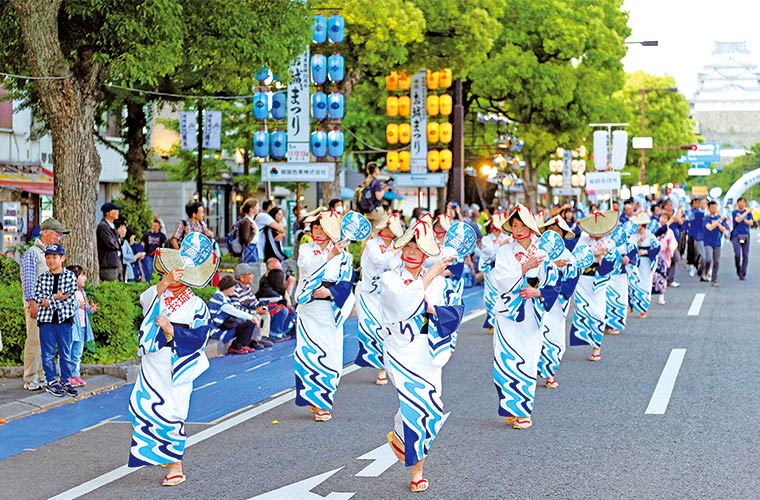
Various events are held throughout the year at Himeji Castle. Check the official website for details such as the “Himeji Castle Festival,” which has become an early summer tradition in Himeji, and seasonal light-up information. More info >>
Himeji City Events 2025|Discover Festivals & Events Near Himeji Castle!
Himeji Castle has many histories, legends, and charms, just as its names such as “Castle of Success,” “Castle of Egrets,” and “Casle of No Wars” suggest.
Why not take a stroll and feel the romance of Himeji Castle, a treasure of Japan and the world?
■Information
DATA
- Yes
- No
-
Wi-Fi

-
Toilet

-
locker

-
Restaurant

On-site -
Parking

-
foreign language

brochure
- Address
- 68, Honmachi, Himeji, Hyogo
- Business hours
- 9:00 a.m. - 5:00 p.m. (Admissions closed 4:00 p.m.)
*Sannomaru Plaza is closed from midnight to 5:00 a.m. (Closed from 6:00 p.m. to 6:00 a.m. from December 27 to 30, 2025).
- Regular holiday
- Dec 29th and 30th
*Temporarily closed on December 27 and 28, 2025.
TOP 5
-
 1
1
Himeji Castle
Himeji Day Trip Tour|Explore the Castle Town by Bike with Washoku Dining and Garden Tea Time!
-
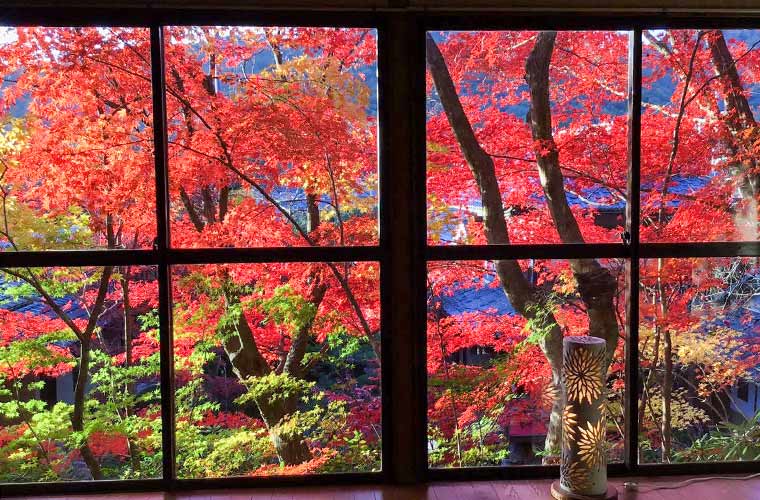 2
2
Things to Do in Himeji
Top 4 Autumn Foliage Spots in Himeji|From Major Attractions such as Himeji Castle to Hidden Historic Cafés — With Event Information
-
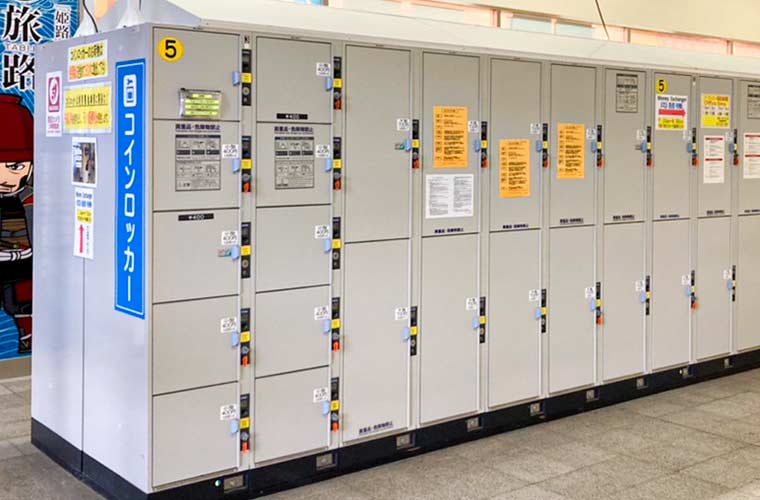 3
3
Useful Information
Where to Find Luggage Lockers & Storage Near Himeji Station|Cash & Card OK + Route Guide Video Included
-
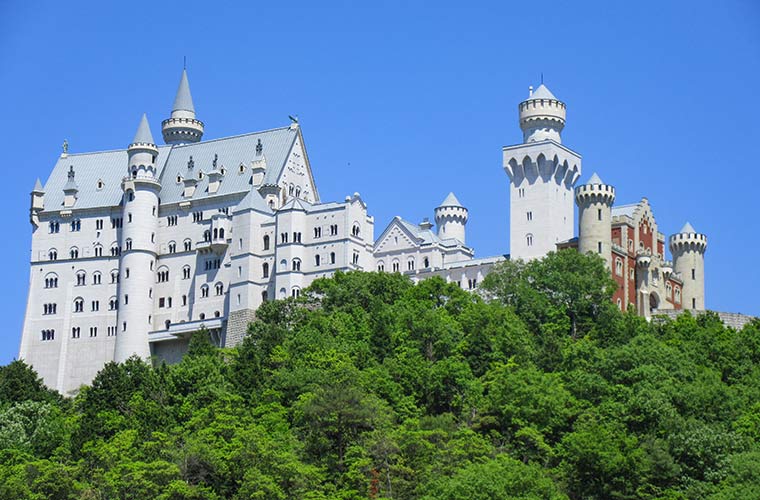 4
4
Things to Do in Himeji
TAIYO PARK - A theme park of World Heritage|Neuschwanstein Castle appears in the mountains of Himeji?
-
 5
5
Himeji Castle
9 Best Places to See Himeji Castle|Get the perfect shoot with cherry blossoms or the replica of the killer whale, etc






